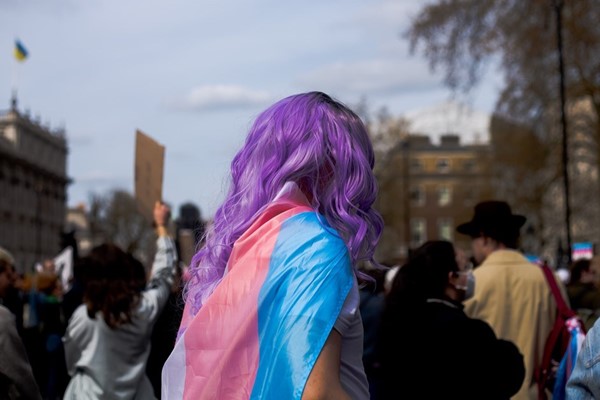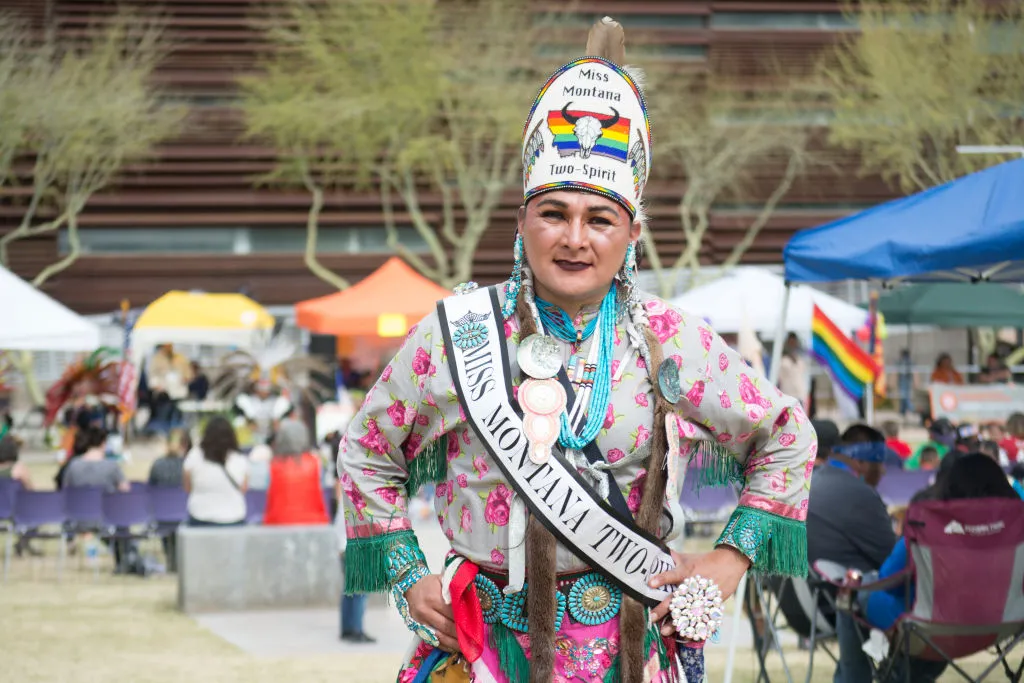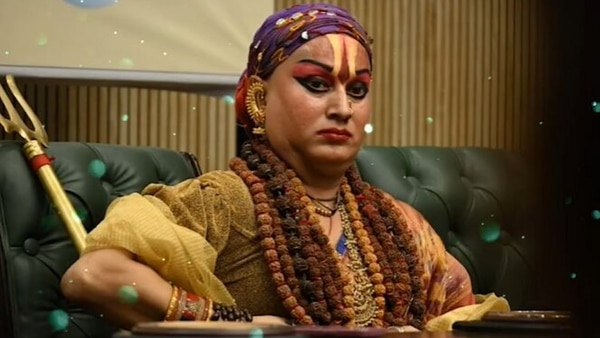
Ahead of the release of her new book, A Short History of Trans Misogyny, we speak to historian Jules Gill-Peterson about how society grew so hostile towards trans women – and how we can challenge this insidious offshoot of transphobia
In recent years, the ‘trans panic’ has become increasingly prevalent in mainstream political narratives in both the UK and US, with politicians unabashedly pursuing anti-trans policies and spreading harmful transphobic rhetoric. The Tory party conference this year witnessed Prime Minister Rishi Sunak saying reductive and inflammatory remarks such as “a man is a man and a woman is a woman, that’s just common sense,” while on the other side of the Atlantic, anti-trans policies are rife, with gender-affirming care now banned for under 18-year-olds in some states. The mainstreaming of these hateful views is having a palpable impact on trans people: a record number of hate crimes were committed last year against transgender people in England and Wales, with an increase of 11 per cent since the previous year.
Disturbingly, trans women are disproportionately the victims of transphobic violence. This year alone, 320 trans and gender-diverse people were killed globally, with 94 per cent of these being trans women or trans-feminine people – and including, tragically, 16-year-old Brianna Ghey. But why are trans women subject to so much hate and violence? Where do these harms originate from? How does misogyny differ for trans women?
In her new book, A Short History of Trans Misogyny, award-winning historian Jules Gill-Peterson sets out to answer these questions, searching the globe for the roots of modern trans misogyny and and unpacking why trans women are burdened by such injustice today. Here, we speak to Gill-Peterson about why we need to interrogate the rise of trans misogyny now more than ever, how the trans panic differs in the UK and US, and how we can resist trans misogyny to create a better future for us all.
Why did you feel it was important to write this book now?
Jules Gill-Peterson: The book has a feminist origin story: I needed to understand a relationship between the personal and the political. I’ve received a tonne of harassment in my public writing and speaking meant to delegitimise my work and, let’s be honest, intimidate or exhaust me into self-censorship. I found it oddly difficult to describe the aggression directed at me specifically for being a trans woman – the blanket term ‘transphobia’ didn’t capture it. I decided that if I wanted to understand the political history informing my personal experience, I needed to do some deep research.
We often associate misogyny with the experiences of cisgender women which results in the further exclusion of trans women. What does trans misogyny mean and how is it experienced?
Jules Gill-Peterson: Trans misogyny has been dramatised for the public through its [overt] forms: explicit violence, particularly murder. Much like violence against women writ large, that only describes one dimension of its vast operations. Trans misogyny transpires in intimate relationships, but it also structures prevailing ideas about trans womanhood and has a lot to do with the exercise of state power, not individuals. I define trans misogyny as sexualising femininity as male to deem it threatening and justify reprisal. Trans femininity is targeted for being excessive and out of line, deserving punishment to restore order. Yet because trans misogyny relies so much on intentional misgendering and even homophobia, it’s a unique phenomenon. For example, trans misogyny helps us explain why anti-trans policy proposals obsess over trans women’s alleged threats in sports, or restrooms, as if trans men don’t exist.

Where did the trans panic we see in modern day British politics come from and what are its historical roots?
Jules Gill-Peterson: The trans panic in British politics today is in some respects unique. It’s a consensus political ideology, encompassing both the Tories and Labour; it includes many feminists; and it’s overwhelmingly secular. In the US, by contrast, trans panic is almost exclusive to the right and evangelical politics. Still, trans panic has a distinct Anglophone imprint. Its historical roots are many, but I wouldn’t date its birth to anti-trans radical feminism in the 1970s. I look back much further, to the British Empire. In the nineteenth century, colonial administrators in India planned the state-sponsored extermination of hijras by sexualising their public femininity as a threat to imperial sovereignty. Hijras were not trans, but British colonialism ‘trans feminised’ them by targeting them. Canadian state policies of cultural genocide directed at Two-spirit peoples likewise projected an Anglophone image of trans femininity onto Indigenous peoples to entrench settler rule. These histories offer us a different starting point for asking why the trans panic consuming British politics emerged at the same moment the politics of imperial nostalgia embedded in Brexit.
Why did you feel it was important to take a global approach when looking at culture and transness?
Jules Gill-Peterson: I’m a historian, so I follow the empirical leads of research. Trans misogyny, I was fascinated to find, has had a specifically global history in that it emerged at the same time in multiple places through practices of imperial statecraft: the policing and gendering of public space, the criminalisation of sex work, and the imposition of capitalist wage labor. I tell a global story because I’m following the trail of evidence it left behind. But more broadly, a global approach stops us from projecting an ultimately ethnocentric and universal ‘transness’ on people, places, and times where it only arrived through colonialism.
“Trans femininity is targeted for being excessive and out of line, deserving punishment to restore order” – Jules Gill-Peterson
Were there any historical figures or events that surprised you during your research, and how did they influence the direction of your narrative?
Jules Gill-Peterson: One of my favourite chapters sets out to answer the question of why trans women so often do sex work. I had always wanted to research Mary Jones, an antebellum free Black woman arrested in New York City in 1836. Jones was a sex worker and, by her own admission in court, a trans woman. I was startled when I began to suspect that New Yorkers did not seem to know she was trans from looking at her; that is, the possibility of ‘clocking’ on the street had not yet been invented. Accounts from trans women in New York 60 years later testify to being clocked and attacked in the way we would recognise today. In measuring the difference between the 1830s and 1890s, I glimpsed a root claim of the book: street violence against trans-feminised people emerged in the second half of the nineteenth century.
How can we resist trans misogyny?
Jules Gill-Peterson: At times, trans misogyny appeals to our culture’s penchant for true crime, a litany of terrible violence with few to little takeaways. It can also feel so pervasive as to be unchangeable. In the book, I argue it has about a 200-year modern history. That might mean resistance to the point of overcoming it will be a long struggle. Still, I think the concrete ways that living as a trans woman or being ensnared in trans misogyny result in sexualised violence, criminalisation, and downward mobility give us urgent clues. Going after the root harms of punitive policing, incarceration, and tackling the poverty that results from being trans-feminised and pushed into an underclass, would all go a long way to mounting a genuine challenge to trans misogyny.
A Short History of Trans Misogyny by Jules Gill-Peterson is published by Verso on January 16 2024.



